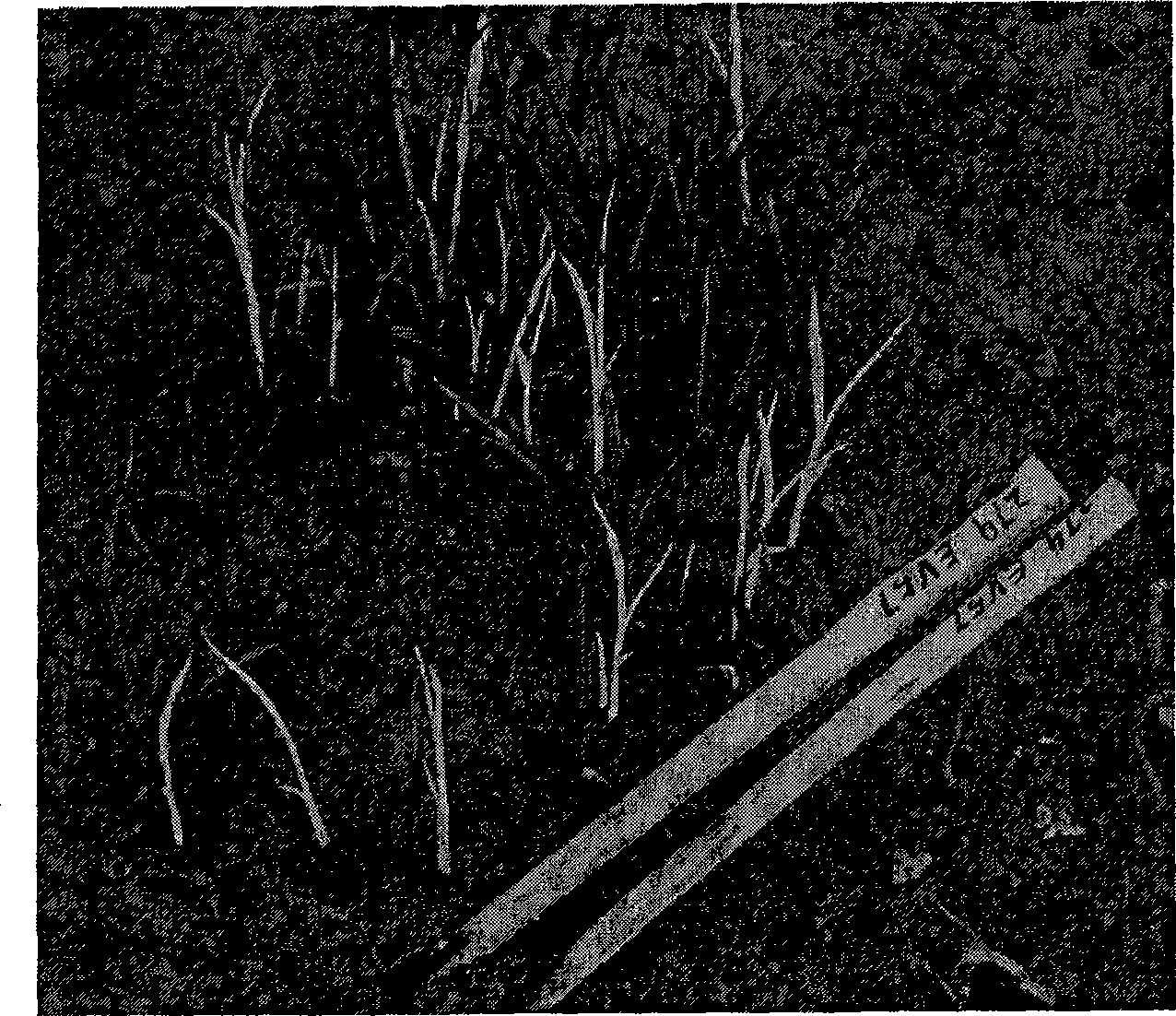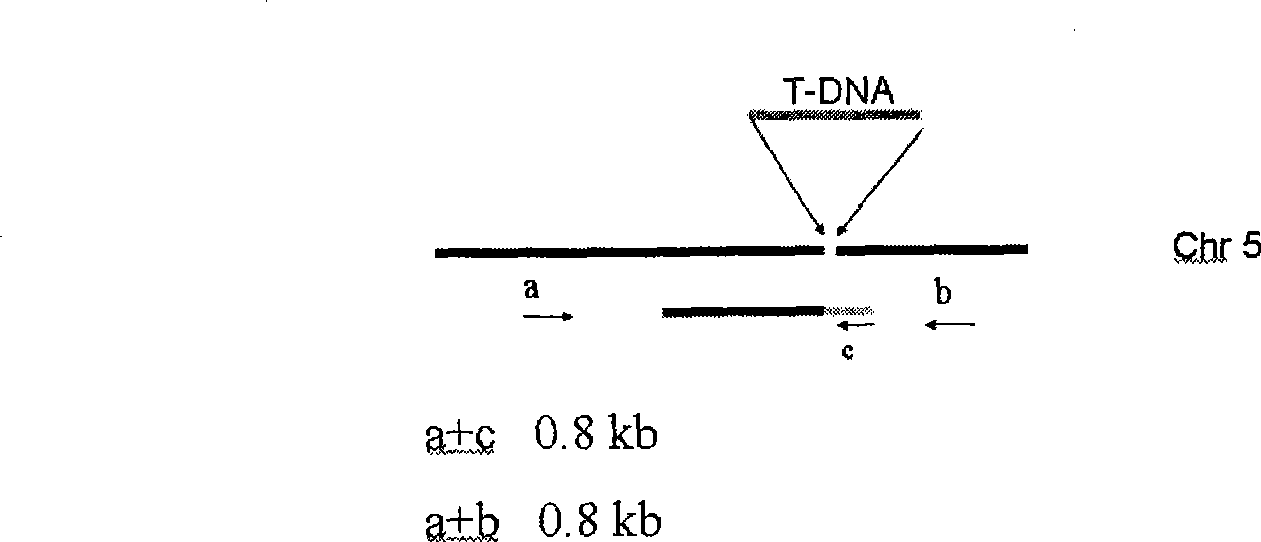Method for appraising albino seeding gene type wound curing
A technology of albino seedlings and genotypes, applied in the field of plant genetic engineering, can solve problems such as difficulties, lethality, and damage to gene functions, and achieve the effects of quick and convenient identification, simple methods, and accurate and reliable results
- Summary
- Abstract
- Description
- Claims
- Application Information
AI Technical Summary
Problems solved by technology
Method used
Image
Examples
Embodiment 1
[0022] Example 1: Detection of albino seedlings is due to T-DNA insertion
[0023] The T-DNA vector pFX-E24.2-R15 (Wu et al., Development of enhancer trap lines for functional analysis of the rice genome. Plant J. 2003, 35: 418-27.) inserted into the middle flower using the enhancer trap system Seeds of the T0 generation of japonica rice variety 11 (Oryza sativa L.subsp.japonica cv.Zhonghua11) were soaked at 25°C for 4 days, germinated at 37°C for 3 days, and sown in the field. After two weeks of field investigation, the albino mutant phenotype strain EV57 was obtained. . The mutant exhibited albino traits when seedlings, such as figure 1 As shown, the mutant plants gradually died after growing for about one month. 20 green seedlings were planted in the field for harvesting seeds for further research.
[0024]The total DNA of the albino seedling mutant EV57 was extracted using the CTAB method (Liu et al., A genome-wide analysis of wide compatibility in rice and precise loca...
Embodiment 2
[0026] Embodiment 2, screening heterozygous single plant harvesting seed
[0027] Design PCR primers according to the T-DNA flanking genome sequence. For this example, a represents the primer designed upstream of the T-DNA insertion site, b represents the primer designed downstream of the T-DNA insertion site, and c represents the primer designed according to the T-DNA end Primers for sequence design. In the T1 generation plants, if it is a single plant homozygous for the T-DNA insertion site, since the T-DNA fragment is more than 10kb, the general PCR reaction cannot amplify a fragment of more than 10kb, so the PCR amplification of the pairing of a and b is negative , but the pairing of a and c can be amplified to obtain a 0.8kb product. If the amplified site is a wild-type single plant without T-DNA insertion, since there is no c primer binding site, only a and b can be paired to obtain a 1.0kb product. As for the heterozygous single strain of the T-DNA insertion site, the...
Embodiment 3
[0028] Embodiment 3, inducing callus, extracting callus DNA, identifying callus genotype
[0029] Select the seeds harvested from plants of heterozygous genotype, peel off the chaff, soak in 75% ethanol for 1 minute, soak in 0.15% mercuric chloride for 15 minutes, then wash 5-6 times with sterilized water, and put the rice grains in the induced culture Callus was induced substantively (see section Induction of Callus in Major Steps of Agrobacterium-mediated Genetic Transformation below). Place it in a dark room at 27°C for about 50 days, and a callus will grow. Pick one callus from each grain of rice and use the CTAB method (Liu et al., A genome-wide analysis of wide compatibility in rice and precise location of s5 locus in the molecular map. Theor Appl Genet, 1997, 95: 809-814) to extract DNA. Use a+b, a+c two pairs of PCR primers to screen out the T-DNA insertion homozygous genotype according to the principle of Example 1, that is, the callus phenotyped as albino seedlings ...
PUM
 Login to View More
Login to View More Abstract
Description
Claims
Application Information
 Login to View More
Login to View More - R&D
- Intellectual Property
- Life Sciences
- Materials
- Tech Scout
- Unparalleled Data Quality
- Higher Quality Content
- 60% Fewer Hallucinations
Browse by: Latest US Patents, China's latest patents, Technical Efficacy Thesaurus, Application Domain, Technology Topic, Popular Technical Reports.
© 2025 PatSnap. All rights reserved.Legal|Privacy policy|Modern Slavery Act Transparency Statement|Sitemap|About US| Contact US: help@patsnap.com



